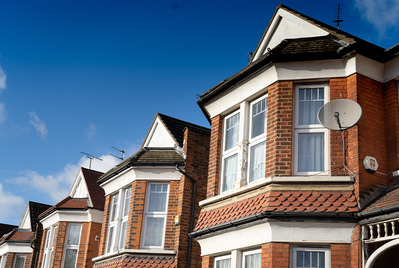
Whether you’re an existing student landlord or you’re just thinking about getting into student lets, the good news is, the student market is thriving.
The UK is the third-most popular location choice for higher education among international students and around 60% of investment into single purpose built student accommodation (PBSA) assets in the UK came from overseas investors in 2020.
Of course, we saw a dip in student accommodation occupancy levels during the pandemic, especially during 2020, but the market has recovered well. According to Unite Students, the largest operator of PBSA in the UK:
- For the academic year 2020-21, there was 88% occupancy
- For 2021-22, that rose to 94% occupancy, with rental growth of 2.3%
- For 2022-23 occupancy hit 99%, with 3.5% rental growth
The Purpose Built Student Accommodation market
PBSA usually comes in the form of luxury city centre buildings, filled with modern en-suite rooms and bedsits, designed specifically to house students.
The developments often come with on-site amenities – such as a coffee shop, gym and laundry facilities – giving students everything they need day-to-day under one roof.
If you want to be a hands-off landlord, these new builds can make an attractive investment option.
They won’t require any investment into major maintenance for the foreseeable future, many come with guaranteed yields for an initial period and there’s usually a dedicated management company for the buildings that can take care of your property on your behalf.
However, although the PBSA market is continuing to grow, rental returns for landlords are around the same as for single-let properties in the general rental market.
In fact, net yields for PBSA have fallen over the last decade, from around 6%-7% to between 3.5% and 5%.
And PBSA only represents a small part of the student rental market. Shared houses are still by far the most popular living choice for students.
The Houses in Multiple Occupation (HMO) student housing market
Given that most student houses are shared by three or more friends, they tend to fall into the category of HMOs.
For landlords, that means increased regulation and health and safety obligations – especially around fire safety – and the majority of HMOs are likely to require a licence.
But, despite this additional financial and administrative burden, HMOs can still offer market-leading rental profits - especially if you’re prepared to be a hands-on landlord - with yields generally at least double those of single lets.
5 reasons student house shares can make a great investment
- Demand is stable
Because there’s a consistent number of students enrolling in universities and colleges each year, the student rental market doesn’t fluctuate in the same way as the general housing market. This stable, strong demand is a big benefit for landlords.
- Rents are regular and predictable
The academic year provides a predictable and regular rental cycle. And even though the academic year only runs from September to June/July and some students leave for the summer, it’s usual for landlords to insist on a 12-month rental agreement.
Most students are perfectly happy with this, as many will want to continue with their part-time job or studies, or even just keep living independently with their friends. - You can confirm new tenants early
Most universities have their housing fairs in January for the following academic year and students tend to start looking for their accommodation early.
So if your current tenants will be leaving at the end of the summer, you should be able to get their replacements lined up well ahead of time.
- Rental income is relatively secure
Some landlords avoid letting to students because they think it’s financially risky. But the truth is, you’re actually less likely to have arrears issues with students, for two reasons:
You can have the students all sign a joint tenancy agreement. That means, as a group, they’re agreeing to pay the total monthly rent and be jointly liable for any other costs, such as damage.
So, even if one of them can’t or won’t pay, or someone moves out, the rest have to cover their share.
You can insist on students having a guarantor. This is common practice for landlords and it’s usually a parent who agrees to guarantee their child’s responsibilities. So if one of your students can’t or won’t pay their rent, you can pursue their guarantor.
If the students’ parents are guarantors, you’ve also got the added bonus that your property will be well looked after. No child wants to deal with a parent who’s been handed a bill for damage!
- You benefit from high rental yields
Charging rent on a per-room basis will give you much higher overall rental income than if you let the property to a single household.
How to make your property attractive to students
Although demand from students is high, there’s a lot of competition in the market and if you want the best tenants, you need to make sure your rental ticks as many of the boxes on their wish list as possible. So here’s our advice on how to do that:
- Buy in the right location
Students tend to prefer certain areas, right down to specific roads. If you buy in the wrong spot, you could find your investment plans crumbling, so make sure you do your research.
If you need some help, just get in touch with your local Your Move branch and have a chat to one of the team.
Generally speaking, students want to be within easy striking distance of their campus, with amenities like coffee shops and a gym nearby.
And today’s more health-conscious young people tend to be more concerned with being close to parks and leisure facilities, rather than having a thriving night-life on their doorstep.
A survey of 1,000 students and 1,000 parents carried out by Unite Students found that (a) nearly half of students already work part-time, and (b) two-thirds of students and nearly three-quarters of parents said they are extremely worried about the increased cost of living.
So, with the number of students who have a part-time job likely to increase this year, make sure you buy in a location where there are plenty of employment opportunities and/or a reliable bus service into the town or city centre. - Be as green as possible
Many of today’s young students are highly engaged in combatting climate change and are likely to be more attracted to an eco-friendly, energy efficient home. So here are some things you should try to incorporate into your rental:
- Renewable heating sources
- A smart meter
- Low-energy lighting
- Water-saving toilets and shower heads
- Somewhere to store recycling
- A composting unit outside
- If there’s a garden, space for tenants to grow their own vegetable and herbs.
- Provide reliable, high-speed WiFi
‘Generation Z’ has never known life without the internet. Online learning and Zoom meetings have sky-rocketed in popularity through the pandemic and entertainment streaming services, such as Netflix and Amazon Prime Video, are a normal part of life today.
So a big part of keeping your student tenants happy is making sure they have a fast, reliable WiFi service that can handle the traffic when they’re all online at the same time.
Top tip – it’s worth considering having a temporary wi-fi set up that you can send them if the one they have isn’t working for any reason. This can take a lot of stress and hassle away, especially if they are on a deadline! - Offer a good quality, modern home
Students expect a good quality, modern interior that’s comfortable and easy to keep clean. So:
- Choose sleek, unfussy units and fittings
- Tile the kitchen floor and the bathroom floor and walls.
- Make sure the beds have decent mattresses
- If there’s space, put a desk in the bedrooms so the tenants can study in peace
- Be generous with appliances – include a dishwasher, large fridge/freezer, microwave, washing machine and a smart TV for the communal living room.
If you’d like to discuss the demand for student housing in your area or have any other questions about letting to students, just contact your local Your Move branch and one of the team will be very happy to help.
The Your Move Content Marketing Team



